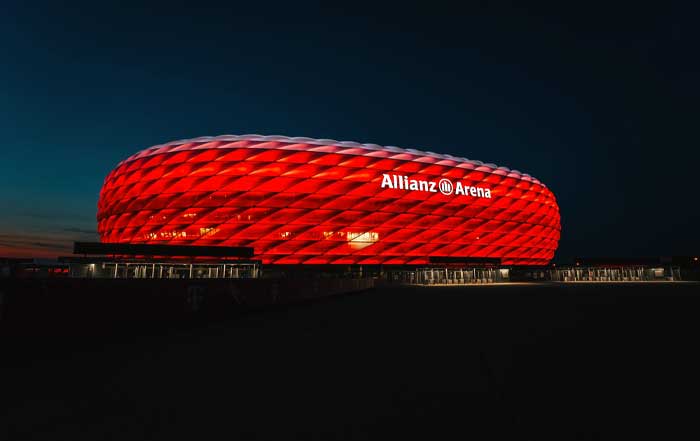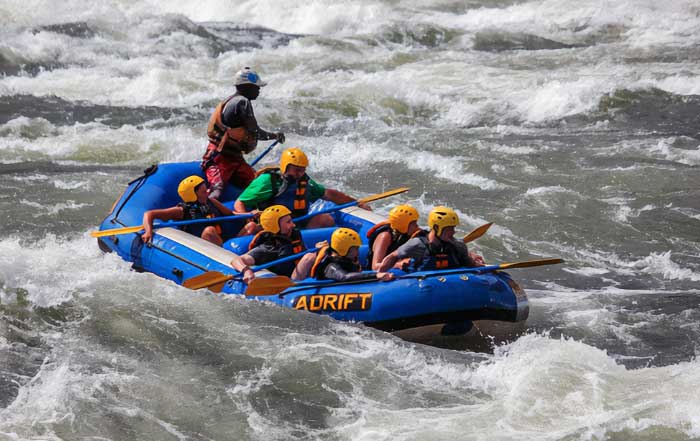Sports stadiums have always carried a symbolic weight that extends far beyond the field of play. In the modern era, these vast structures serve as architectural masterpieces, tourism magnets, economic engines, and cultural symbols. They embody the ambitions of nations and the pride of local communities, hosting not only unforgettable sporting moments but also political gatherings, concerts, and celebrations of global significance.
By 2025, the definition of what makes a stadium “the best” has shifted dramatically. It is no longer only about size or seating capacity but also about technological innovation, environmental responsibility, visitor experience, and global recognition. Fans now demand seamless digital connectivity, diverse hospitality options, and sustainable practices alongside the energy of live sport. This evolution reflects a broader global narrative: sports stadiums are part of the growing convergence between business, culture, and adventure.
For the readers of xdzee.com, a hub for sports, world exploration, and travel, this series presents a journey across continents, spotlighting the best stadiums and examining how they influence everything from local economies to global branding strategies.
Wembley Stadium – London, United Kingdom
If there is one venue that defines global football heritage, it is Wembley Stadium. Rebuilt and reopened in 2007 on the historic grounds of the old Wembley, this 90,000-seat colossus is instantly recognizable by its soaring 133-metre arch, which has become an architectural landmark in London’s skyline. Beyond its aesthetic grandeur, Wembley has positioned itself as one of the most important multipurpose stadiums in the world.
It regularly hosts the FA Cup Final, England’s national football fixtures, and major European competitions, including the UEFA Champions League Final. Yet its impact goes far beyond football. The venue has hosted concerts for icons such as Beyoncé, Adele, and Ed Sheeran, making it a cultural epicenter. For London, Wembley delivers substantial economic returns, driving tourism and providing jobs across hospitality, media, and event services. Its alignment with the city’s broader performance and entertainment industries underscores the deep ties between sport and economic development.
For more information, visit Wembley Stadium.
Camp Nou – Barcelona, Spain
Few stadiums in the world embody the identity of a football club as completely as Camp Nou does for FC Barcelona. Opened in 1957 and currently undergoing an extensive transformation into the “Nou Camp Nou,” it remains the largest football stadium in Europe. Once completed, the renovation will expand seating capacity to nearly 105,000, integrating cutting-edge technology, improved accessibility, and advanced environmental standards.
Camp Nou is not only the spiritual home of Barça but also a global tourist attraction, drawing millions annually who seek to experience the club’s culture and Catalonia’s unique identity. Beyond football, the redevelopment emphasizes sustainability, incorporating solar panels, rainwater recycling systems, and green transport access. This echoes Europe’s commitment to reducing environmental footprints in major sports venues while enhancing fan experience.
For Barcelona, Camp Nou is a pillar of economic life, tying into the city’s reputation for art, gastronomy, and tourism. A visit to Camp Nou seamlessly blends with exploring Gaudí’s architecture, making it part of a wider destination experience.
Allianz Arena – Munich, Germany
Perhaps the most visually distinctive stadium in the world, Allianz Arena in Munich is instantly recognizable by its futuristic façade of inflated ETFE plastic panels. These panels light up in red, blue, or white depending on which team is playing, symbolizing the fusion of art and engineering. Opened in 2005 and home to FC Bayern Munich, the stadium epitomizes German precision and innovation.
With a capacity of 75,000, Allianz Arena combines tradition with modernity. It has hosted Champions League finals, World Cup matches, and countless Bundesliga encounters, cementing its place in football history. What sets it apart is its fan-first design: unobstructed sightlines, efficient transport links, and advanced amenities make it one of the most comfortable venues in Europe.
The stadium also connects directly to Munich’s strong economy, attracting international business visitors and tourists who combine football with Bavaria’s cultural offerings. From Oktoberfest to Alpine adventures, Allianz Arena serves as both a sporting landmark and an engine for adventure tourism.
Visit Allianz Arena for more details.
San Siro – Milan, Italy
Known officially as the Stadio Giuseppe Meazza, the San Siro has stood since 1926 as one of Europe’s most iconic football cathedrals. Shared by two of Italy’s greatest clubs, AC Milan and Inter Milan, the San Siro has witnessed countless historic derbies and European nights. Its unique spiral towers and steep stands give it a dramatic presence that reflects Milan’s architectural flair.
Although plans are underway for a new stadium, the San Siro remains beloved by fans worldwide. Its future highlights an important issue for Europe’s legendary arenas: balancing preservation of heritage with demands for modern infrastructure. Regardless of what comes next, San Siro will always symbolize the artistry and passion of Italian football, entwining itself with Milan’s identity as a global fashion and business hub.
Stade de France – Paris, France
Built for the 1998 FIFA World Cup, the Stade de France is the national stadium of France and the largest in the country, with an 80,000-seat capacity. It hosts football, rugby, athletics, and international concerts, serving as a versatile venue that embodies French sporting ambition. The stadium has hosted FIFA and UEFA finals, as well as the Rugby World Cup, and will once again take the global stage during the 2024 Paris Olympics.
Its design, with a removable lower stand to accommodate athletics, reflects France’s commitment to multipurpose utility. Located just outside Paris, it generates substantial tourism, bringing visitors who blend sporting experiences with Parisian cultural exploration. As with other major arenas, Stade de France connects the threads of sport, culture, and world heritage in a way few stadiums achieve.
Closing Notes on Europe’s Arenas
Europe’s iconic stadiums illustrate how deeply sport is woven into cultural and economic life. From London to Barcelona, Munich to Milan, and Paris to beyond, these venues are not just stages for athletic competition but vibrant ecosystems of business, culture, and innovation. They showcase how countries leverage their arenas as tools of soft power, global branding, and national pride, while offering fans unforgettable memories that endure for generations.
In the next part of this series, we will travel westward to North America, where stadiums like AT&T Stadium, Madison Square Garden, and SoFi Stadium push the boundaries of technology, scale, and commercial influence.
North America’s Stadium Icons
The Scale and Showmanship of North American Stadiums
In North America, sports stadiums represent more than venues for competition; they embody a unique blend of entertainment, business, and cultural identity. They are home to some of the world’s largest franchises, stage spectacular entertainment events, and influence urban development in ways few other institutions can match. From the futuristic mega-complexes of the United States to the multipurpose arenas of Canada, these venues reflect the continent’s appetite for scale, innovation, and theatrical presentation.
The region’s stadiums have become landmarks not only because of the teams they host but because of the transformative role they play in local economies and global branding. Cities such as New York, Los Angeles, and Dallas are known as much for their stadiums as for their skylines, and each venue serves as a hub where business, culture, and news converge.
AT&T Stadium – Arlington, Texas, United States
AT&T Stadium, home to the Dallas Cowboys, is one of the largest and most advanced sports venues in the world. Opened in 2009, it has a seating capacity of over 80,000, expandable to 100,000, making it among the biggest stadiums in the United States.
What sets AT&T Stadium apart is its technological sophistication. Its retractable roof and enormous center-hung video board, stretching from 20-yard line to 20-yard line, provide fans with an unmatched multimedia experience. More than just a football ground, the stadium regularly hosts basketball, boxing, soccer, and even esports tournaments, making it a versatile facility at the heart of Texas’s economy.
The Cowboys’ brand, valued at billions of dollars, demonstrates how stadiums and franchises drive enormous business activity. AT&T Stadium is also integrated into the regional jobs market, supporting thousands of positions across security, hospitality, event management, and retail.
Learn more at AT&T Stadium.
Madison Square Garden – New York City, United States
Madison Square Garden is not just a stadium—it is an institution. Nestled in midtown Manhattan, this indoor arena is home to the New York Knicks (NBA) and New York Rangers (NHL), and is regarded as the most famous arena in the world.
Opened in its current form in 1968, Madison Square Garden has undergone multiple renovations, ensuring it remains modern without losing its legacy. Beyond sports, the venue has hosted legendary concerts by Elvis Presley, Michael Jackson, and Taylor Swift, as well as political conventions and cultural spectacles. Its significance lies in its ability to merge sport and culture seamlessly into the identity of New York City.
The Garden also underscores the commercial influence of stadiums in urban centers. Its location atop Penn Station makes it one of the most accessible arenas in the world, ensuring constant tourism inflow and high media visibility. More than a venue, Madison Square Garden is a global symbol of performance and prestige.
SoFi Stadium – Inglewood, California, United States
Opened in 2020, SoFi Stadium in Los Angeles represents the new generation of mega-complexes. Home to both the Los Angeles Rams and the Los Angeles Chargers, it boasts a capacity of 70,000, expandable to 100,000, and is one of the most expensive stadiums ever built, with costs exceeding $5 billion.
Its architectural design includes a transparent roof and an Oculus scoreboard that hangs 360 degrees around the field. More than just a stadium, SoFi is part of a larger entertainment district that includes retail, hospitality, and mixed-use developments, redefining the way stadiums integrate with cities.
SoFi is also central to Los Angeles’s positioning as a global sports hub. It hosted the 2022 Super Bowl, is scheduled for matches in the 2026 FIFA World Cup, and will be pivotal during the 2028 Olympics. Its role in tourism, real estate, and technology investment demonstrates how stadiums have become tools of urban reinvention.
Discover more at SoFi Stadium.
Rogers Centre – Toronto, Canada
The Rogers Centre in Toronto, formerly known as the SkyDome, is an engineering landmark for being the first stadium with a fully retractable roof. Opened in 1989, it is home to the Toronto Blue Jays of Major League Baseball and occasionally hosts Canadian Football League games and concerts.
Located adjacent to the CN Tower, one of Canada’s most iconic landmarks, the Rogers Centre is deeply woven into Toronto’s tourism economy. Its retractable roof allows it to host events year-round, despite Canada’s unpredictable weather.
The stadium reflects Toronto’s diverse identity. From baseball fans across North America to international tourists, the Rogers Centre provides a mix of sport and entertainment that aligns with Canada’s multicultural character. It also highlights how stadiums in North America often serve as architectural pioneers, setting global trends for design and functionality.
Lambeau Field – Green Bay, Wisconsin, United States
While many modern stadiums boast size and spectacle, Lambeau Field stands out for its tradition and heritage. Opened in 1957, it is the home of the Green Bay Packers, one of the most storied franchises in American football. Despite multiple renovations, Lambeau has retained its historic charm, known affectionately as “The Frozen Tundra.”
With a capacity of 81,000, Lambeau is a testament to the enduring power of community-focused sports culture. Unlike stadiums in large metropolitan areas, Lambeau is located in a small city, yet it has become a global pilgrimage site for NFL fans. Its significance underscores how identity and tradition can elevate a stadium to global prominence, even without the glitz of newer facilities.
North America’s Stadium Legacy
North America’s stadiums embody the continent’s appetite for size, innovation, and spectacle. They are not just stages for sport but symbols of economic might, cultural vibrancy, and technological ambition. From the tradition of Lambeau Field to the futuristic scale of SoFi Stadium, these arenas capture the spirit of a region where sport is both entertainment and industry.
As the continent prepares for events like the 2026 FIFA World Cup and the 2028 Los Angeles Olympics, North America’s stadiums will continue to be at the forefront of global attention, reinforcing their role as cornerstones of sport, business, and world culture.
World's Greatest Stadiums Explorer
Journey through iconic stadiums across continents
Explore Iconic Stadiums
Select a continent above to discover the world's most remarkable stadiums, from architectural masterpieces to cultural landmarks.
5 Iconic Venues
5 Major Arenas
6 Modern Stadiums
5 Historic Venues
6 Emerging Arenas
Asia and the Pacific Stadiums
Asia-Pacific as a Rising Sports Power
The Asia-Pacific region has rapidly established itself as a global hub for world-class sporting infrastructure. Over the last three decades, governments and private investors across Asia and Oceania have invested billions into stadium construction, driven by the ambition to host international tournaments and to strengthen national identity through sport. From the cricketing cathedrals of Australia to the futuristic multi-use stadiums of Japan, South Korea, and Singapore, the region reflects both heritage and innovation.
These venues are not only sports facilities but also economic engines, cultural landmarks, and architectural icons. In many cases, they have transformed urban landscapes and placed their host cities firmly on the global sporting map. Asia-Pacific stadiums are characterized by their focus on sustainability, advanced technology, and multi-purpose flexibility, aligning with regional trends in innovation and urban development.
Japan National Stadium – Tokyo, Japan
Built for the Tokyo 2020 Olympics and designed by world-renowned architect Kengo Kuma, the Japan National Stadium represents a new chapter in sustainable architecture. With a capacity of 68,000, it incorporates extensive use of wood sourced from all 47 prefectures of Japan, symbolizing national unity. The design emphasizes harmony with nature, featuring greenery along its balconies and a structure that reflects traditional Japanese aesthetics while integrating modern engineering.
The stadium is a centerpiece not only for athletics but also for football, rugby, and cultural events. Its post-Olympics role underscores Japan’s ability to adapt infrastructure for long-term use, ensuring that investment continues to benefit the country long after the Games. For Tokyo, the stadium is both a cultural asset and a tourism draw, enhancing the city’s reputation as a destination for global visitors.
Learn more about the Japan National Stadium.
Singapore National Stadium – Singapore
The Singapore National Stadium, part of the Singapore Sports Hub, is a technological marvel and a symbol of Southeast Asia’s emergence as a global sports and entertainment hub. Opened in 2014, the stadium features a retractable roof and an innovative cooling system that maintains comfortable temperatures in the tropical climate.
With a seating capacity of 55,000, it regularly hosts international football matches, rugby tournaments, concerts, and even community events. As a key part of Singapore’s broader strategy to position itself as a center for business and culture, the stadium integrates seamlessly with surrounding retail, hospitality, and leisure infrastructure.
Its multi-purpose design allows it to transform for various sports, from cricket to athletics, reflecting Singapore’s commitment to adaptability and innovation. The Singapore National Stadium highlights how nations can use stadiums as tools for both soft power and economic development.
Melbourne Cricket Ground – Melbourne, Australia
Known simply as the MCG, the Melbourne Cricket Ground is one of the most iconic stadiums in the world. Opened in 1853, it has grown into a 100,000-seat colossus that stands as the spiritual home of cricket and Australian Rules Football. It is also the largest stadium in the Southern Hemisphere.
The MCG has hosted two Olympic Games (1956 and 2000), multiple Cricket World Cups, and annual events such as the AFL Grand Final and the Boxing Day Test Match. Its cultural importance cannot be overstated: for Australians, a pilgrimage to the MCG is akin to visiting a national monument.
Beyond sport, the MCG contributes to Melbourne’s economy, tourism, and identity as one of the world’s great sporting capitals. Its blend of heritage and modernity—preserving traditions while continually upgrading facilities—illustrates how stadiums can evolve while maintaining authenticity.
Visit the Melbourne Cricket Ground for more details.
FNB Stadium – Johannesburg, South Africa (Africa’s Gateway Mention)
While Africa is geographically distinct from Asia-Pacific, it is worth noting that the FNB Stadium in Johannesburg shares parallels with Asia’s emerging mega-stadiums. Known as Soccer City, it seats nearly 95,000 and is inspired by African pottery in its design. It famously hosted the 2010 FIFA World Cup Final, becoming a symbol of African pride and global recognition. Its inclusion in this section underscores how stadiums across regions share the ambition of shaping cultural and economic identity.
Saitama Stadium 2002 – Saitama, Japan
Another standout in Japan is Saitama Stadium 2002, one of the largest football-specific stadiums in Asia, with a capacity of over 63,000. Built for the 2002 FIFA World Cup, it has since become the home of Urawa Red Diamonds, one of Japan’s most successful football clubs. Its design emphasizes football intimacy, creating an atmosphere comparable to European stadiums.
The stadium represents Japan’s growing football culture and its role in Asia’s integration into the global sporting community. Hosting both club and international matches, it continues to be a vital part of Japan’s sports infrastructure.
Eden Park – Auckland, New Zealand
Eden Park is New Zealand’s premier sports stadium, best known for hosting rugby and cricket. With a capacity of 50,000, it has staged Rugby World Cup finals and is considered sacred ground for rugby fans worldwide.
The stadium is not only a symbol of New Zealand’s sporting prowess but also an example of how smaller nations leverage iconic venues to maintain global recognition. Its importance to Auckland’s identity and its role in international tourism highlight the cultural and economic weight of stadiums even in less populous countries.
The Asia-Pacific Stadium Narrative
Asia-Pacific’s stadiums reflect a delicate balance between heritage and modernity. Venues like the MCG and Eden Park celebrate longstanding sporting traditions, while the Japan National Stadium and Singapore National Stadium showcase how architecture, technology, and sustainability shape the future of sports. These facilities have become regional powerhouses, hosting global tournaments, driving tourism, and representing their nations on the world stage.
For readers of xdzee.com, the Asia-Pacific story is particularly relevant because it highlights how sport connects adventure, travel, and performance in ways that inspire both fans and entrepreneurs.
Latin America’s Historic Arenas
Latin America’s Passion for Sport
Few regions in the world embody sporting passion as deeply as Latin America. Football is not merely a game here; it is a cultural identity, a collective heartbeat, and in many cases, a unifying national language. Stadiums in this part of the world are not just facilities but sacred spaces where dreams are forged, history is written, and heroes are immortalized. Latin America’s iconic stadiums are steeped in tradition, filled with unforgettable memories, and surrounded by communities for whom sport is a way of life.
These arenas represent more than architecture; they are symbols of resilience, pride, and cultural heritage. They have hosted historic FIFA World Cup Finals, legendary Copa Libertadores matches, and national celebrations that ripple far beyond the pitch. At the same time, modern renovations and sustainability initiatives reflect the region’s commitment to adapting to the needs of the 21st century, ensuring that these historic cathedrals of sport remain relevant for generations to come.
Maracanã Stadium – Rio de Janeiro, Brazil
The Maracanã Stadium is arguably the most famous football stadium in the world. Opened in 1950 for the FIFA World Cup, it was originally designed to seat nearly 200,000 spectators, making it the largest stadium of its time. Today, following renovations, it holds around 78,000 fans, but its mystique remains undiminished.
The Maracanã has hosted some of the most iconic moments in football history, including the dramatic 1950 World Cup Final where Brazil suffered a shocking defeat to Uruguay, remembered as the "Maracanazo." It has since staged World Cup matches in 2014, the Olympic Games in 2016, and countless Copa Libertadores finals.
More than a venue, the Maracanã is a symbol of Brazil’s footballing soul. For Rio de Janeiro, it is a cultural landmark and an economic driver, attracting millions of tourists who come to experience its aura. Beyond football, the stadium also hosts concerts by global icons such as Paul McCartney and Coldplay, reinforcing its role as a hub of culture and entertainment.
Estadio Azteca – Mexico City, Mexico
The Estadio Azteca is another titan of world football, steeped in legendary moments. Opened in 1966, it is one of the largest stadiums in the world, with a capacity of over 87,000. Its global significance stems from its hosting of two FIFA World Cup Finals—1970 and 1986—making it the only stadium to hold this honor.
It was here that Pelé lifted his third World Cup trophy in 1970, and where Diego Maradona scored his famous "Hand of God" goal followed by the "Goal of the Century" in 1986. These moments transformed the Azteca into a shrine of footballing history.
Today, the stadium remains the home of Club América, one of Mexico’s most successful clubs, and the Mexican national team. With renovations underway to prepare for the 2026 FIFA World Cup, the Estadio Azteca continues to stand as a cornerstone of both Mexican pride and global football heritage. It is also deeply tied to news and culture in Mexico, often serving as a site for concerts and large-scale events.
Estadio Monumental – Buenos Aires, Argentina
The Estadio Monumental, also known as the Estadio Monumental Antonio Vespucio Liberti, is the largest stadium in Argentina and the home of River Plate, one of South America’s most storied clubs. With a current capacity of over 83,000, it is also the venue most often used by Argentina’s national football team.
The Monumental has hosted World Cup matches, including the 1978 FIFA World Cup Final where Argentina claimed its first world title. More recently, it has been the stage for electrifying Superclásicos between River Plate and Boca Juniors, matches that capture the raw intensity and passion of Argentine football culture.
Beyond football, the stadium is central to Buenos Aires’s identity, tying into the city’s reputation for passion, artistry, and cultural expression. Concerts by global artists such as U2 and Guns N’ Roses have added to its international allure, making it not only a sports arena but also a cultural venue for world entertainment.
Estadio Centenario – Montevideo, Uruguay
Built in 1930 for the inaugural FIFA World Cup, the Estadio Centenario in Montevideo is a UNESCO World Heritage Site, recognized as one of the most historically significant stadiums in world football. With a capacity of around 60,000, it may not be as large as its Latin American counterparts, but its importance is unmatched.
The stadium hosted the first-ever World Cup Final, where Uruguay defeated Argentina to lift the trophy. Since then, it has remained a symbol of Uruguay’s proud football tradition and a reminder of the nation’s outsized influence in the sport. Its historical value ensures that it continues to attract football pilgrims from across the globe.
Mineirão – Belo Horizonte, Brazil
Another jewel in Brazil’s collection of iconic venues is the Estádio Governador Magalhães Pinto, commonly known as Mineirão. Opened in 1965 and extensively renovated for the 2014 World Cup and 2016 Olympics, it seats around 62,000 fans.
The stadium is home to Cruzeiro Esporte Clube and regularly hosts matches of the Brazilian national team. Although infamous for hosting Brazil’s shocking 7-1 defeat to Germany in the 2014 World Cup semifinals, Mineirão has also witnessed moments of triumph and continues to thrive as a modernized, multi-purpose venue.
Its integration of sustainability features, including solar power initiatives, reflects Brazil’s growing focus on environmentally responsible infrastructure.
Latin America’s Cultural Cathedrals
Latin American stadiums are not just structures; they are cultural cathedrals where football, politics, music, and national pride converge. The Maracanã and Estadio Azteca stand as two of the most important venues in global football history, while the Monumental and Centenario preserve legacies that transcend generations. These arenas are woven into the very fabric of their societies, embodying the rhythm, resilience, and identity of Latin America.
For fans, athletes, and travelers alike, these stadiums offer more than just matches; they provide experiences that tie together adventure, travel, and culture in some of the most passionate environments in the world.
Africa and the Middle East Stadiums
Emerging Arenas with Global Ambitions
While Europe and the Americas have long dominated the stadium landscape, Africa and the Middle East have increasingly emerged as regions with bold ambitions to redefine the global sporting stage. These regions have invested heavily in infrastructure to showcase their capabilities to host the world’s largest events. From the cultural pride of South Africa’s stadiums to the futuristic marvels constructed in Qatar for the FIFA World Cup, these arenas highlight a fusion of heritage, innovation, and national aspiration.
For Africa, stadiums often serve as symbols of unity and resilience, representing the continent’s determination to compete on the global stage while celebrating cultural identity. In the Middle East, the emphasis has been on building ultra-modern, technologically advanced facilities that double as showcases for wealth, vision, and architectural innovation. Together, they underscore how sport functions as both an industry and an expression of world culture.
FNB Stadium – Johannesburg, South Africa
Also known as Soccer City, the FNB Stadium is the largest in Africa, with a seating capacity of around 94,000. Originally built in 1989 and extensively renovated ahead of the 2010 FIFA World Cup, it has since become one of the continent’s most recognizable landmarks. Its design, inspired by the shape and color of an African calabash (traditional pot), connects the structure deeply with local heritage.
The stadium achieved global prominence as the venue for the 2010 FIFA World Cup Final, when Spain defeated the Netherlands. It also hosted the tournament’s opening ceremony, watched by millions worldwide, marking Africa’s historic debut as a World Cup host. Beyond football, the FNB Stadium has staged concerts by artists like Shakira, U2, and Justin Bieber, reinforcing its role as a cultural icon.
For Johannesburg, the FNB Stadium is not only an economic driver but also a proud symbol of African resilience and achievement. It continues to attract visitors who tie their sporting experiences to South Africa’s broader adventure and cultural tourism industry.
Moses Mabhida Stadium – Durban, South Africa
The Moses Mabhida Stadium is one of the architectural gems of South Africa, designed with a sweeping arch that has become an emblem of Durban’s skyline. Opened in 2009, it was a key venue during the 2010 World Cup and has since become one of the most versatile stadiums in Africa.
What sets it apart is its focus on fan experience and tourism. Visitors can ride a sky car or climb to the top of the stadium’s iconic arch, offering panoramic views of Durban and the Indian Ocean. This innovative approach highlights how stadiums can transcend sport and become integrated tourist attractions, blending travel and entertainment.
The stadium regularly hosts football, rugby, cricket, concerts, and community events, demonstrating how infrastructure investments can be maximized for long-term cultural and economic benefits.
Khalifa International Stadium – Doha, Qatar
Khalifa International Stadium is one of Qatar’s most historic sports venues, originally opened in 1976 and redeveloped as part of preparations for the 2022 FIFA World Cup. With a capacity of 45,000, it is part of the larger Aspire Zone, a sports city dedicated to training, events, and innovation in sports science.
As one of the World Cup venues, Khalifa International Stadium showcased Qatar’s ambition to become a leader in global sports hosting. Its modernized design features cooling technology to combat desert heat, advanced accessibility standards, and a focus on sustainability. Beyond the World Cup, it continues to host athletics competitions, including the IAAF World Championships, reinforcing Qatar’s role as a hub for international sporting events.
Lusail Stadium – Lusail, Qatar
Perhaps the most famous of Qatar’s new arenas, Lusail Stadium is a futuristic mega-stadium with a capacity of 88,000. Built specifically for the 2022 World Cup, it was the venue for the tournament’s final, instantly placing it among the most iconic stadiums in football history.
Its design, inspired by traditional Arab lanterns, highlights how cultural motifs can be integrated into modern mega-structures. Beyond football, the stadium is envisioned as part of a broader city-building project in Lusail, a newly developed urban area showcasing Qatar’s ambition to use sport as a catalyst for urban growth.
Post-World Cup, the stadium is expected to be repurposed with community facilities, shopping centers, and schools, symbolizing a shift toward sustainable legacy planning.
King Fahd International Stadium – Riyadh, Saudi Arabia
Opened in 1987, the King Fahd International Stadium in Riyadh remains one of the most significant venues in the Middle East. With a capacity of 68,000 and a distinctive tent-like roof structure, it has hosted countless domestic and international football matches, including the FIFA Confederations Cup in the 1990s.
As Saudi Arabia positions itself as a future global sporting hub—investing in everything from Formula 1 to esports—the stadium continues to play a central role in national strategy. Plans for modernization align with the kingdom’s Vision 2030, which seeks to diversify the economy and use sport as a vehicle for international engagement and innovation.
Cairo International Stadium – Cairo, Egypt
As the largest stadium in Egypt and one of the biggest in Africa, the Cairo International Stadium has long been a symbol of sporting pride in North Africa. Opened in 1960 and renovated multiple times, it has a capacity of 75,000 and is home to Egypt’s national football team as well as major clubs like Al Ahly and Zamalek during international matches.
The stadium has hosted African Cup of Nations finals and numerous other continental tournaments, reinforcing Egypt’s role as one of Africa’s sporting powerhouses. It is deeply tied to Cairo’s identity, serving as both a football temple and a venue for national celebrations.
Africa and the Middle East in the Global Stadium Map
Stadiums in Africa and the Middle East reveal a unique blend of tradition, cultural identity, and futuristic ambition. South Africa’s FNB and Moses Mabhida Stadiums reflect how sporting arenas can celebrate heritage while driving travel and adventure tourism. Meanwhile, Qatar’s Lusail and Khalifa International Stadiums demonstrate how infrastructure can transform a small nation into a global sporting superpower almost overnight.
These regions are increasingly using stadiums not only as sporting venues but also as platforms for cultural diplomacy, economic diversification, and international branding. For readers of xdzee.com, they offer striking examples of how sport connects business, culture, and innovation across continents.
The Future of Global Stadiums
Stadiums at the Crossroads of Technology, Culture, and Sustainability
As the world looks beyond 2025, sports stadiums are evolving into highly sophisticated ecosystems that extend far beyond their traditional role as arenas for games. They are now centers of technological innovation, cultural diplomacy, and sustainable design, shaping how cities present themselves to the world. From smart crowd management systems powered by artificial intelligence to zero-emission building practices, stadiums are leading the way in redefining what it means to be a public gathering space in the 21st century.
This forward-looking perspective demonstrates how stadiums will continue to influence business, culture, and innovation, while simultaneously reflecting shifting global priorities such as climate responsibility, digital integration, and economic inclusivity.
The Rise of Smart Stadiums
The concept of the smart stadium has become central to the future of global sports infrastructure. These facilities are equipped with advanced technologies that enhance both fan experiences and operational efficiency. AI-driven ticketing systems, facial recognition for security, real-time crowd flow monitoring, and 5G connectivity ensure smoother entry, safer environments, and uninterrupted digital engagement.
Tottenham Hotspur Stadium in London, Levi’s Stadium in San Francisco, and SoFi Stadium in Los Angeles are early adopters of these technologies, setting benchmarks for global arenas. Fans can order food via mobile apps, enjoy immersive augmented reality replays, and access hyper-personalized services, blurring the line between physical and digital entertainment.
These innovations are not just conveniences—they also feed into safety protocols, aligning with global concerns about mass gatherings and public health. For readers of xdzee.com, the development of smart stadiums underscores the importance of merging sports with cutting-edge safety practices.
Sustainability and Green Architecture
Sustainability has become one of the defining features of modern stadium design. As nations grapple with climate change and carbon reduction targets, stadiums are emerging as beacons of environmentally conscious architecture.
Examples include:
The Japan National Stadium, which integrates extensive woodwork and energy-saving design.
The Mercedes-Benz Stadium in Atlanta, recognized for its LEED Platinum certification, with water conservation systems, renewable energy sources, and advanced recycling programs.
Qatar’s Education City Stadium, which incorporated recycled materials and was designed to minimize environmental impact, even dismantling sections for reuse elsewhere.
Future stadiums are increasingly being designed as carbon-neutral or even carbon-negative projects. With solar panels, green roofs, and rainwater harvesting systems, they are positioned not just as sporting facilities but as models for sustainable innovation.
Multipurpose Complexes: Beyond Sports
Another clear trend is the transformation of stadiums into multipurpose entertainment and business complexes. Modern arenas are increasingly designed with flexibility in mind, capable of hosting concerts, esports tournaments, conventions, and community events alongside traditional sports.
Tottenham Hotspur Stadium is a leading example, built with a retractable pitch that allows the venue to switch between football and NFL games. Similarly, SoFi Stadium integrates an entertainment district with retail, dining, and leisure spaces, blurring the lines between sports and urban lifestyle hubs.
This multipurpose approach maximizes revenue, boosts jobs across industries, and ensures that stadiums remain in constant use year-round. It also aligns with the modern fan’s desire for comprehensive experiences that combine sport, leisure, and lifestyle.
The Role of Stadiums in Global Diplomacy
Stadiums have always been arenas for more than sport—they are platforms for national identity and international diplomacy. Events such as the Olympics, FIFA World Cups, and continental tournaments allow nations to showcase not just athletic prowess but also cultural heritage and economic strength.
China’s Bird’s Nest Stadium in Beijing, Qatar’s Lusail Stadium, and France’s Stade de France highlight how infrastructure projects are tied to national branding strategies. Hosting international sporting events is a deliberate exercise in soft power, allowing nations to shape narratives on a global stage.
In an increasingly interconnected world, stadiums will play an even greater role as venues for international engagement, aligning with global news and diplomatic events.
Immersive Fan Experiences
As entertainment competition grows, stadiums are investing in immersive technologies that elevate the fan experience to new levels. Augmented reality overlays, holographic replays, virtual reality seat previews, and drone shows are becoming part of the modern stadium toolkit.
For younger generations, these features transform stadium visits into interactive adventures rather than passive viewing experiences. They connect directly with trends in digital culture, esports, and entertainment, areas increasingly merging with traditional sports.
The integration of digital and physical worlds reflects how future stadiums will align with broader performance and cultural industries.
Inclusive and Accessible Design
The stadium of the future is also expected to be inclusive in ways that earlier generations were not. Universal design principles, greater accessibility for people with disabilities, and gender-inclusive facilities are now at the forefront of planning. This inclusivity ensures that stadiums serve as spaces for all citizens, reinforcing their role as community assets rather than elite facilities.
In many countries, stadium design is also beginning to incorporate cultural inclusivity, with prayer rooms, family zones, and safe transportation options for women, aligning with broader societal priorities.
The Stadiums of 2030 and Beyond
Looking toward 2030 and beyond, stadiums will continue to serve as both reflections of and catalysts for change in society. They will become smarter, greener, and more adaptable, merging ethics, sustainability, and technology into designs that set global benchmarks.
Expect to see:
Stadiums powered entirely by renewable energy.
AI-driven crowd management systems ensuring safety and efficiency.
Integration of esports arenas within traditional stadiums.
Community-centered facilities blending education, retail, and culture.
Adaptive venues that can expand or contract depending on event needs.
These innovations will ensure that stadiums remain not just iconic landmarks but also essential components of urban life, shaping the future of destination tourism, brands, and global cultural exchange.
Conclusion
From the legendary arenas of Europe and Latin America to the futuristic marvels of Asia, North America, Africa, and the Middle East, the world’s stadiums form an interconnected tapestry of sport, culture, and innovation. They stand as cathedrals of human ambition—structures where communities gather, nations present themselves, and history is written.
In 2025, stadiums are more than places to watch games. They are urban landmarks, economic drivers, and symbols of a shared global identity. As the future unfolds, the best stadiums around the world will continue to evolve, offering experiences that combine adventure, travel, sports, and culture into unforgettable journeys.
For readers of xdzee.com, these arenas are not only destinations to admire but also living examples of how sport binds the world together—past, present, and future.








